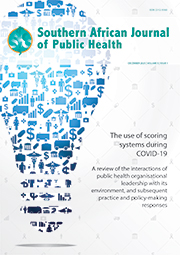Research

Strategies for improving the management of acute pain in households in Nakuru County, Kenya
Abstract
Background. The effective management of acute pain remains a challenge in many households, especially in resource-poor countries. In Kenya, healthcare-seeking behaviour associated with the management of acute pain has not been clearly documented.
Objective. To investigate strategies that are used to improve the management of acute pain in households in Nakuru County, Kenya.
Methods. A pretested questionnaire was used to collect data from 404 randomly selected households in Nakuru County, Kenya. The sampled households were surveyed three times: the first survey was to establish the prevalence of acute pain, and subsequent surveys assessed the effectiveness of treatment methods used by the patients. It was hypothesised that the interplay between the perception of pain, human capital, social capital and the burden of pain would be associated with effective management of acute pain. A logistic regression model utilising Gibbs sampling and data augmentation was used to establish factors that predict the use of effective healthcare services following the onset of acute pain.
Results. The mean (standard deviation) age of the respondents was 28.85 (10.30) years, and 53% were male. The prevalence of acute pain was estimated to be 51% (95% confidence interval 46 - 56). Effective management of acute pain was found to be related to perception of pain, with one additional unit of pain perception being associated with a 0.006 increase in effectiveness of management. In turn, pain perception was related to human capital, social capital and the burden of pain. Being male and membership of voluntary associations were negatively associated with pain perception. However, age and pain intensity had positive relationships with the perception of pain.
Conclusion. In order to effectively manage acute pain, the primary measure on which health educationists and policy planners should focus attention is enhancing pain perception. Such a policy option could be effected by a variety of techniques, including encouraging people to reduce the number of voluntary groups they belong to, or instead, by increasing general knowledge about pain among patients. Pain perception could also be affected by reducing patients’ pain intensity.
Author's affiliations
J N Macai, Department of Biological and Biomedical Sciences, Faculty of Science, Laikipia University, Nyahururu, Kenya
Full Text
Cite this article
Article History
Date published: 2019-10-31
Article Views
Full text views: 2160

.jpg)


Comments on this article
*Read our policy for posting comments here